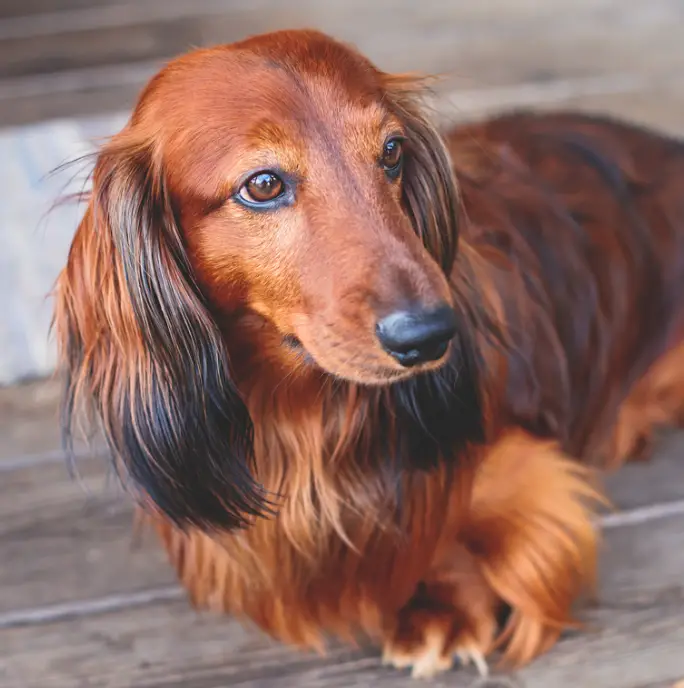Training a dachshund puppy can be a rewarding and challenging experience. These energetic and intelligent dogs are known for their strong-willed personalities, which can make training them a bit of a challenge. However, with the right approach and patience, it is possible to teach a dachshund puppy to be a well-behaved and obedient companion.
In this article, we will provide tips and strategies for training a dachshund puppy, including how to teach basic commands, potty training, and socialization. By following these steps, you can help your dachshund puppy grow into a confident and well-mannered dog.
How To Socialize A Dachshund Puppy
Start early: It’s important to start socializing your dachshund puppy as soon as possible, ideally between the ages of 8-12 weeks. This is the critical socialization period where puppies are most receptive to new experiences and can learn to be comfortable around different people and environments.
Expose them to a variety of people: The more people your dachshund puppy meets and interacts with, the more comfortable they will be around people in general. This can include friends, family members, and even strangers.
Take them on walks and outings: Walks and outings are a great way to expose your dachshund puppy to new sights, sounds, and smells. This can help them become more confident and adaptable to different environments.
Introduce them to other dogs and animals: It’s important for your dachshund puppy to learn how to socialize with other dogs and animals, as this will help them be more comfortable around them in the future. This can include visits to dog parks or doggy daycare, or simply interacting with other dogs and animals while on walks.
Use positive reinforcement training: When socializing your dachshund puppy, it’s important to use positive reinforcement training techniques, such as treats and praise, to encourage good behavior. This will help your dachshund puppy feel more comfortable and confident in new situations.
Gradually increase exposure to new experiences: Don’t try to expose your dachshund puppy to too many new experiences all at once. Start with small steps and gradually increase their exposure to new environments and situations. This will help them feel more comfortable and confident as they grow and mature.
Basic Obedience Training
Training a dachshund puppy can be a fun and rewarding experience. Here are a few basic obedience training tips to get you started:
- Start training early: It’s important to start training your dachshund puppy as soon as you bring them home. Puppies learn quickly and are more receptive to training at a young age.
- Use positive reinforcement: Reward your puppy with treats and praise for good behavior. Avoid using punishment or yelling, as it can be counterproductive and lead to fear and aggression.
- Keep training sessions short and consistent: Puppies have short attention spans, so keep training sessions short (5-10 minutes) and consistent. Practice a few times a day to help your puppy retain what they’ve learned.
- Teach basic commands: Start with the basics like “sit,” “stay,” and “come.” Use treats and praise to reward your puppy for following commands.
- Socialize your puppy: It’s important to expose your puppy to a variety of people, places, and experiences in order to help them become well-rounded and confident. This can also help prevent behavior issues in the future.
- Enroll in a training class: Consider enrolling in a puppy training class. A professional trainer can provide guidance and support as you work on training your dachshund.
With patience, consistency, and positive reinforcement, you can help your dachshund puppy grow into a well-behaved and well-trained dog.
Potty Training
- Start by introducing your puppy to the potty area. This can be a designated spot in your yard or a designated area inside your home.
- Take your puppy to the designated spot every hour or two to give them the opportunity to go potty. It is important to be consistent with this schedule.
- When your puppy goes potty, be sure to praise them and give them a treat. This will help them associate going potty with positive reinforcement.
- If your puppy has an accident inside the house, do not scold them. Simply clean it up and take them to the designated potty area.
- As your puppy gets older and begins to understand the concept of going potty outside, start setting a timer for them to go potty every two hours.
- As your puppy gets even older, you can start increasing the time between potty breaks.
- It is important to remember that every puppy is different and it may take some time for them to fully understand the concept of potty training. Be patient and consistent, and your puppy will eventually get the hang of it.
How To Deal With Common Behavior Issues
One common behavior issue with dachshund puppies is excessive barking. This can be frustrating for owners and disruptive to the household. To address this issue, it is important to first determine the cause of the barking. Is the puppy barking out of fear or anxiety, or are they simply seeking attention? Once the root cause has been identified, it is important to establish clear boundaries and consistent consequences for excessive barking. This may include using a verbal command such as “quiet” or “enough” and rewarding calm behavior with treats or praise. It is also important to provide the puppy with plenty of mental and physical stimulation to prevent boredom and excessive barking.
Another common behavior issue with dachshund puppies is digging. This can be damaging to gardens and landscaping and is a natural instinct for many dogs. To address this issue, it is important to provide the puppy with a designated digging area in the yard or designate a specific toy for digging. It is also important to consistently redirect the puppy to the designated digging area or toy when they begin digging elsewhere.
Finally, dachshund puppies may also exhibit destructive behavior, such as chewing on household items or furniture. To address this issue, it is important to provide the puppy with plenty of appropriate chew toys and to consistently redirect them to these toys when they begin chewing on inappropriate items. It is also important to properly train the puppy to leave certain items alone, such as shoes or children’s toys. By addressing these behavior issues early on and providing consistent training and guidance, dachshund owners can help their puppies grow into well-behaved and well-adjusted adult dogs.
Conclusion
In conclusion, training a Dachshund puppy requires patience, consistency, and positive reinforcement. It is important to establish rules and boundaries early on, as Dachshunds can be stubborn and prone to misbehaving if not properly trained. Consistently rewarding good behavior and using positive reinforcement techniques will help the puppy understand what is expected of them and encourage them to continue to behave well. It is also important to remember to be patient, as training a puppy takes time and effort. By following these guidelines and being consistent in their training, a Dachshund puppy can be a well-behaved and enjoyable companion.






